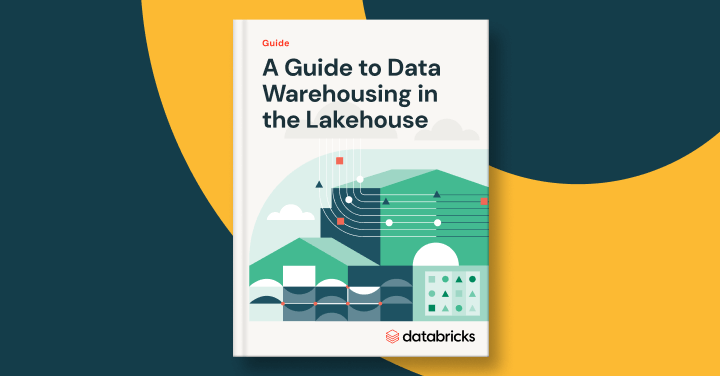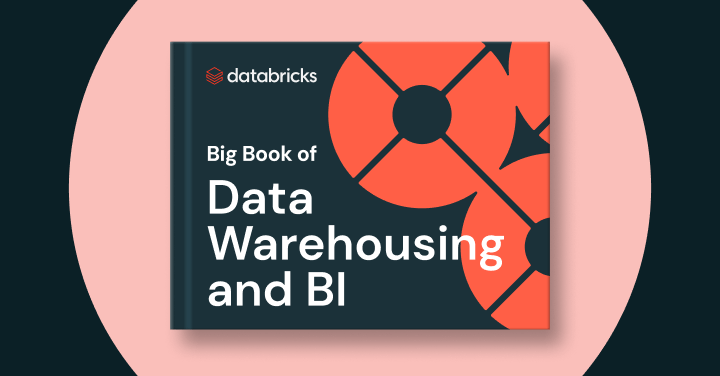The Modern Data Warehouse
Aligning with data storage solutions

In today’s data-driven business landscape, organizations face an ever-growing need to store, process and analyze vast amounts of data from diverse sources. The modern data warehouse has evolved beyond traditional storage and analytics to become an intelligent, self-optimizing platform that leverages AI and machine learning capabilities. This evolution has introduced the concept of the intelligent data warehouse, built on lakehouse architecture, which not only provides access to AI and ML models but also uses AI to optimize queries, automate dashboard creation and dynamically adjust performance and sizing.
As businesses navigate their digital transformation journeys, understanding where and how a modern data warehouse fits into their overall data strategy has become essential for staying competitive and making informed decisions. With the rapid evolution of cloud technologies and analytics capabilities, modern data warehouses are reshaping how organizations leverage their data assets. The intelligent capabilities of these systems represent a significant advancement from traditional data warehousing approaches, offering unprecedented levels of automation and optimization.
The combination of lakehouse architecture and intelligent features enables organizations to handle both traditional structured data and modern unstructured data sources while automatically optimizing performance and resource utilization. This convergence of AI with data warehousing technology marks a fundamental shift in how organizations can approach data management and analytics, making sophisticated data operations more accessible and efficient than ever before.
Here’s more to explore
What is a modern data warehouse?
A modern data warehouse is a cloud-based data management system designed to support business intelligence and analytics activities by integrating and processing data from multiple sources. Unlike its traditional counterparts, a modern data warehouse can handle both structured and unstructured data while providing the scalability and flexibility needed for contemporary business operations.
These modern systems come with embedded AI functions and BI capabilities, allowing organizations to perform advanced analytics without additional tools. They also feature intelligent SQL assistance and automated governance controls, making data analysis more accessible while maintaining compliance and security.
These systems differentiate themselves through their ability to process real-time data streams, support machine learning operations and adapt to changing business requirements without significant infrastructure modifications. They serve as a central repository where data from various sources — including IoT devices, social media, transaction systems and operational databases — can be consolidated, transformed and made available for analysis.
Modern data warehouses excel in their capacity to handle large-scale data processing while maintaining performance and reliability. They incorporate advanced security features and governance controls, ensuring that sensitive data remains protected while still being accessible to authorized users. The ability to scale computing resources independently of storage resources allows organizations to optimize costs while maintaining performance for diverse workloads.
The road to modern data warehouses
Most organizations already maintain some form of data warehousing solution, typically evolved over years of business operations. The journey to modernization often begins with recognizing the limitations of existing systems, such as scalability constraints, maintenance overhead and inability to handle diverse data types.
The migration path to a modern data warehouse requires careful consideration of existing investments and business continuity requirements. Organizations typically begin by assessing their current data infrastructure, identifying pain points and developing a comprehensive modernization strategy. This strategy must account for not only technical requirements but also organizational dynamics and user adoption challenges.
A successful migration journey often starts with pilot projects focused on specific business domains or use cases. This approach allows organizations to validate the benefits of modernization while minimizing risk. As confidence grows, the scope can be expanded to include more complex scenarios and larger data volumes.
The modernization process typically involves several key phases. Initially, organizations must evaluate their existing data assets and determine which datasets should be prioritized for migration. This is followed by the development of a detailed migration plan that includes data validation procedures and rollback capabilities. The actual migration often occurs in waves, with each wave focusing on a specific data domain or business function.
Throughout the migration process, organizations must maintain operational continuity while gradually introducing new capabilities. This might involve running parallel systems during transition periods or implementing sophisticated data synchronization mechanisms. The goal is to ensure that business users maintain access to critical data while the organization transitions to the modern platform.
What are the key modern data warehouse concepts?
Modern data warehouses represent a significant evolution in data management capabilities. Their design principles focus on agility, scalability and integration capabilities that go far beyond traditional approaches. The fundamental differences between traditional and modern data warehouses can be understood through several key aspects.
| Aspect | Traditional data warehouse | Modern data warehouse |
| Infrastructure | On-premises hardware | Cloud-based or hybrid |
| Scalability | Limited by physical hardware | Dynamic, on-demand scaling |
| Data types | Primarily structured data | Structured, semi-structured and unstructured |
| Processing model | Batch processing | Real-time and batch processing |
| Cost model | High upfront investment | Pay as you go |
| Integration | Limited to internal systems | Multiple sources, including APIs |
| Analytics capability | Predefined reporting | Advanced analytics and machine learning |
| Maintenance | Regular hardware updates required | Managed service updates |
| Data processing | ETL (extract, transform, load) | ELT (extract, load, transform) |
| Security | Perimeter-based | Identity-based with multiple layers |
| AI optimization | Manual optimization and tuning | Intelligent self-optimization of queries, performance and resource allocation |
| Data governance | Manual governance policies | Intelligent self-optimization of queries, performance and resource allocation |
| AI functions | No embedded AI capabilities | Built-in AI functions for data analysis and predictions |
| BI | Requires separate BI tools | Embedded BI and dashboard capabilities |
| AI-aided SQL assistance | No SQL assistance | Intelligent SQL completion and optimization suggestions |
Understanding modern data warehouse architecture
Modern data warehouse architecture has evolved to meet the demanding requirements of contemporary data processing and analytics. While there’s no one-size-fits-all approach, successful implementations share common architectural principles and components that work together to provide a robust and flexible data management solution.
The foundation typically begins with a data ingestion layer that supports multiple data sources and formats. This layer must handle both batch and streaming data while maintaining data quality and consistency. Modern ingestion mechanisms often incorporate real-time validation and quality checks, ensuring that only reliable data enters the warehouse.
Storage architecture in modern data warehouses leverages cloud technologies to provide virtually unlimited scalability. The storage layer typically implements a multitiered approach, with different storage options optimized for various access patterns and cost considerations. Hot data might reside in high-performance storage, while less frequently accessed data moves to more cost-effective storage tiers.
One notable architectural pattern emerging in modern data warehouses is the Databricks medallion architecture. This design pattern organizes data into progressive layers (Bronze, Silver and Gold), each representing increasing levels of data refinement and quality. This approach aligns with modern data warehouse principles by providing a structured yet flexible framework for data progression from raw ingestion through to business-ready analytics. See Data modeling on Databricks for more information.
Modern data warehouses incorporate advanced governance capabilities with automated lineage tracking, access controls and auditing. Built-in BI and dashboard tools enable direct visualization and reporting, while AI-assisted SQL features help users write and optimize queries more effectively.
Processing capabilities in modern data warehouses extend far beyond simple query execution. The processing layer typically incorporates distributed computing frameworks that can handle complex analytical workloads. This includes support for machine learning operations, real-time analytics and advanced data transformation pipelines.
Challenges to data warehouse modernization
The transition to a modern data warehouse presents several significant challenges that organizations must carefully navigate.
Data migration is one of the most formidable obstacles. Organizations often underestimate the intricacies involved in moving existing data while maintaining business continuity. This process requires careful planning to ensure data integrity, maintain historical records and preserve existing business logic while transitioning to new platforms.
Security and compliance considerations become more complex in modern data warehouse environments. The distributed nature of cloud-based systems introduces new attack vectors and security challenges. Organizations must implement comprehensive security frameworks that address data encryption, access control and audit requirements. Compliance with regulations such as GDPR, HIPAA or industry-specific requirements demands careful attention to data governance and privacy protection measures.
The skills gap presents another significant hurdle. Modern data warehouses require expertise in cloud technologies, data engineering and advanced analytics. Many organizations struggle to find professionals who understand both traditional data warehouse concepts and modern cloud-based implementations. This challenge extends beyond technical skills to include experience with data modeling, governance and performance optimization in cloud environments.
Cost management in cloud-based data warehouses requires a different approach compared to traditional systems. While the pay-as-you-go model offers flexibility, it also introduces the need for careful resource monitoring and optimization. Organizations must develop new strategies for controlling costs, such as implementing automated scaling policies and optimizing query patterns to minimize resource consumption.
Integration challenges often emerge when connecting modern data warehouses with existing systems. Legacy applications may require significant modifications to work effectively with cloud-based warehouses. Organizations must carefully consider how to maintain data consistency across hybrid environments while ensuring acceptable performance for critical business processes.
Exploring modern data warehouse modeling
Modern data warehouse modeling has evolved significantly to meet contemporary analytical requirements. Today’s approaches must balance the need for flexibility with performance considerations while supporting diverse analytical workloads. Data vault modeling has gained prominence as a methodology particularly well suited to modern data warehouses, offering a flexible and scalable approach to handling historical data and changing business requirements.
The evolution of dimensional modeling in modern environments has led to new patterns and practices. While traditional star schemas remain relevant, they’ve been adapted to handle real-time data updates and more complex relationships between business entities. Modern implementations often incorporate temporal data handling and support for slowly changing dimensions at a scale that wasn’t previously possible.
Hybrid modeling approaches have emerged to address diverse analytical needs. These approaches combine elements of various modeling methodologies to create flexible data structures that can support both traditional reporting and advanced analytics. The ability to maintain multiple representations of the same data, optimized for different use cases, has become increasingly important.
Modern data warehouse modeling must also consider the implications of distributed processing and storage. Partitioning strategies, data distribution patterns and query optimization become critical considerations in cloud environments. Successful implementations often incorporate a layered approach to data modeling, with different layers optimized for specific types of analysis or access patterns.
Data modeling on Databricks
The real-time nature of modern business operations has influenced how data models are designed and implemented. Models must support rapid data ingestion while maintaining data quality and consistency. This has led to the development of new patterns for handling streaming data and real-time updates within the warehouse environment.
Databricks implements a distinctive approach to data warehouse modeling through medallion architecture, a data design pattern that defines a series of incrementally refined data layers within the lakehouse environment. This architecture consists of three primary tiers: Bronze, Silver and Gold, each representing increasing levels of data quality and refinement.
The Bronze layer serves as the initial landing zone for raw data entering the lakehouse. Here, data arrives in its original format through either batch or streaming transactions and is converted to Delta tables. This layer preserves the source data in its purest form while making it accessible for further processing.
The Silver layer functions as the integration tier, where data from various sources comes together to form the enterprise data warehouse. This layer typically implements either third normal form (3NF) or data vault modeling patterns, establishing clear primary and foreign key relationships. The Silver layer is schema-on-write and atomic, optimized for change to accommodate evolving business needs while maintaining data integrity.
The Gold layer represents the presentation tier, containing one or more dimensional data marts that capture specific business perspectives. This layer also supports departmental and data science sandboxes, enabling self-service analytics across the enterprise. By providing dedicated compute clusters for these sandboxes, organizations can prevent the creation of ungoverned data copies outside the lakehouse environment.
This structured approach to data modeling within lakehouse architecture allows organizations to maintain a single source of truth while providing the flexibility needed for various analytical use cases. The medallion architecture, combined with features like Unity Catalog, ensures proper data governance and lineage tracking throughout the modeling process.
Conclusion
The modern data warehouse represents a fundamental shift in how organizations manage and utilize their data assets. By providing scalable, flexible and cost-effective solutions for data storage and analytics, it enables businesses to derive more value from their data while adapting to changing business requirements. The journey to modernization, while challenging, offers significant benefits in terms of analytical capabilities, scalability and cost efficiency.
The emergence of solutions like Databricks data warehousing capabilities represents the next evolution in modern data warehouse architecture. By combining data lakehouse architecture with SQL warehousing capabilities, organizations can now build highly performant, cost-effective data warehouses that run directly on their data lakes. This approach eliminates traditional data silos while providing essential features like ACID transactions, schema evolution and unified governance through tools like Unity Catalog. Such innovations demonstrate how modern data warehousing continues to evolve, offering organizations the ability to maintain a single source of truth while leveraging familiar tools and providing robust governance and security features.


